Rollei Prego 90 Review – Clunky Style, Good Lens
Do you want a good design function, a great lens, or both in a point and shoot camera? The design form of the Rollei Prego 90 is so clunky it makes you wonder if it was designed by a committee of 2nd string German engineers (hey, I’m German-American, I can say that) following orders from some Marketing Department.
But the photos can be wonderful.
Three Rolls so Far
I purchased the Rollei Prego 90 long distance via Craigslist for $30 a few years ago. I read somewhere
that it was a fine point and shoot so I bought it. After all, it was a Rollei camera, correct?
I shot my first roll of film in a Chicago cemetery at a family ceremony. This was before I was organized with my film negatives and CD. Some of those photos remain. Photos taken at high noon on a summer day rarely come out nicely. Sorry, I don’t own a scanner yet for scanning film photos and digitizing my photos.
I shot the second roll in the summertime of 2011 at Lake Geneva, Wisconsin and some of the photos were dazzling. The panoramic switch on this camera is a lot of fun.
The third roll was shot in and around Chicago, IL in a warm March of 2012. Nothing fancy, just a
subdivision near Oak Brook, IL. But I took some hand held shots at night with the Rollei Prego 90 without a tripod. To my pleasant surprise, the Rollei Prego 90 took fine photos at night in Chicago with ASA 200 speed film. And I didn’t even need a tripod.
I just learned that this camera has a “fuzzy” mode. It minimizes fuzzy photos when taking shots in dark locations. I wish I had known that for the photo shown below of the Irving Avenue CTA stop viaduct in Chicago, IL.
But those gosh darn photos are pretty good. In fact, some people rave about the Rollei Prego 90 point and shoot camera at Photography Review. A 4.49 out of 5 rating with 35 ratings is very good. That’s probably why I purchased it. I’m sure its Rollei lineage also was a factor in my purchasing the camera.
One reviewer from Singapore said all he uses is a Yashica T4 and his Rollei Prego 90 for photography. I guess I would qualify, I own both those cameras.
Initial Impressions on my Rollei Prego 90 Camera
In some ways, point and shoot cameras are harder to assess than good old fashioned heavy, metal SLRs and rangefinders. You can physically examine a point and shoot camera but you don’t know what it can do until you invest $10 into a battery (or less) and start testing the camera.
- Lens. Thankfully, the lens was clean and without the usual fingerprints you find on old point and shoot cameras.
- Body. No scratches or chips. It’s in fine shape.
- Shutter speeds. You can’t test shutter speeds on a point and shoot. They either work with the battery or they don’t.
- Aperture. I normally open up the back of a camera, point the camera to the artificial lights, adjust the aperture, and tested different aperture sizes to see if they were working. I don’t know of any way to test the different apertures of a point and shoot camera. Insert battery and a roll of film and shoot a test roll.
- Film advance. You can test film advance on a point and shoot. Purchase a battery and insert an expired roll of film. Shoot 24 times and hope the roll of film auto rewinds. This camera worked. But other point and shoot cameras fail the film advance test. Read my Canon Sure Shot 120 review to learn how a point and shoot camera can fail the film advance test.
- View finder. The view finder was clear although incredibly hard to use. I found myself squinting immediately when using it.
- Battery chamber. The battery chamber was clean, just difficult to open. You will need a paper clip to open the battery chamber.
The Rollei Prego 90 was what I expected it to be at first glance. It was clunky in size and had too many controls or features. The real reason people purchase this camera is for the quality of the lens and the photos. You can only appreciate the camera by using it.
Rollei Prego 90 Review – Technical Details
I know that visitors want specs, but I’m not a spec kind of guy. Neither am I willing to steal somebody else’s work off the Internet. So if you want terrific detail on specifications go to the Butkus manuals. But for now, here are my simple technical details.
- Produced. These cameras were produced in the mid 1990’s.
- Camera type. Point and shoot (actually, more like a think first, point, think again, then shoot).
- Lens. 28mm to 90 mm Schneider-Kreutznach lens.
- Shutter. Automatically selected from 1/3 to 1/400th of a second. B exposures of up to 60 seconds possible.
- Film Speed Scale. ASA 50-3200.
- Exposure Meter. Normally automatic depending on what modes or flash you choose on the top of the camera. Back light compensation is possible although not easy to learn.
- Film Loading. This all assumes you have a battery in the camera. Drop the film into the back of the camera. Extend the tip to the area marked “film tip”. Close the film door. The film advances correctly.
If you’re serious about using this camera, you can read the Rollei Prego 90 manual thanks to an M. Butkus of New Jersey. Consider paying him a small “thank you” fee for his good work.
Provenance or History
I prefer purchasing cameras at garage sales or even on Craigslist where I can learn something about my new, old camera. But no history on this camera. Absolutely none. All I remember is that my Rollei Prego 90 came from a distant Craigslist purchase from the East coast of the U.S. It cost me $30 plus postage.
My Repairs for the Rollei Prego 90, None
No repairs needed, thankfully. I have trouble enough making minor repairs to my SLRs and rangefinders. Just glad this point and shoot worked as soon as I opened the package.
How does the Rollei Prego 90 feel?
It’s clumsy. But the photos are above average.
It’s too big, it conveniently fits into nothing. It feels solid in a plastic sort of way. It seems to jerk a little
bit when you press the electronic shutter. It can drive you a little nuts trying to figure out its features.
Nice features of the Rollei Prego 90.
- Solid, but not horribly heavy. Yes, I’ve used that phrase before to describe other cameras. But for a 30 minute walk in Chicago I don’t mind having the Canon FTb over my shoulder. Hiking with my camera bag, Canon FTb, two lenses, and light meter is a different story, that’s heavy.
- The lens. It comes with a 28-90 mm lens made by Schneider-Kreutznach. This fine lens makes up for a lot of negatives regarding this camera.
- Panoramic switch. This camera has a panoramic switch which grows on you after a while.
Problems with the Rollei Prego 90? Yes.
- Feels clunky. At least a nice heavy metal camera can feel good in your hands. Or, a plastic point and shoot like my Olympus mju would feel tiny yet capable. The Rollei Prego 90 is an odd design that’s just stuck in the middle between heavy metal and small, plastic efficiency. Sorry, it just feels clunky.
- Viewfinder. The viewfinder seems tiny and is unpleasant to use. I find myself squinting a lot. Your eye needs to be in perfect position to use the viewfinder.
- Extensive features. There are so many features to this camera you will need to read the manual. If you just want to point and shoot with this camera, it will get the job done. To really utilize this camera you need to study its functionality. Do you like reading German manuals?
- Battery replacement. This is perhaps the strangest battery replacement method I’ve seen. You need a paper clip to poke in a hole to pry/pop open the battery chamber. On the bottom of the camera you will see the instructions, “Unlock with pin.” Awkward.
Rollei Prego 90 Sample Photos
The Rollei Prego 90 isn’t magical. It’s a point and shoot camera but you need to be thoughtful when taking your photos. Here are a few more photos I’ve taken with my Rollei Prego 90.
I purposely took this photo wondering how the camera would address the brightness of the sky with the trees on the distant shore. I was purposely testing the camera’s auto exposure capability. It clearly demonstrates that the brightness of the sky overwhelmed the metering. The trees and the pond were my greatest interest and they are underexposed. The camera does have an exposure compensation method, but you may need a degree from a German engineering school to understand that feature (and others).
Here’s a simple photo of me at work. My camera friend and colleague Mickey took the photograph. You can see my water bottle, blue Weight Watcher book, and my Rollei Prego 90 gray case on my desk. You want to be able to give your camera to someone else with an expectation that a photo will come out correctly.
Rollei Prego 90 Review – Summary
Yes, the Rollei Prego 90 is clunky point and shoot camera that yields very good photos with a fine lens. But I’m in no hurry to sell my Rollei Prego 90 to anyone. And the manual for the camera will give you headaches. You can read the Rollei Prego 90 manual thanks to an M. Butkus of New Jersey. Consider paying him a few bucks if you use his manual. (I just paid him $3.00 via PayPal.)
Is the Rollei Prego 90 my favorite point and shoot camera? No, it’s not. My favorite point and shoot is the underrated Canon 130u. (And yes, I own a Yashica T4, Olympus Stylus Epic, and the Rollei Prego 90.)
As I wrote this blog article I kept remembering awkward/quirky things about this camera (viewfinder, battery replacement, etc.) But when you study this Rollei point and shoot and learn how to use it, it takes some very nice photos. This is a hard camera to learn and a hard camera to sell to others: the photos make it worth keeping this camera in your collection.
Thanks for reading my Rollei Prego 90 review today. If you can find the Rollei Prego 90 for an affordable price at a garage sale, buy one. It will reward you with some wonderful photos.
Thanks for visiting What is a Film Camera today.

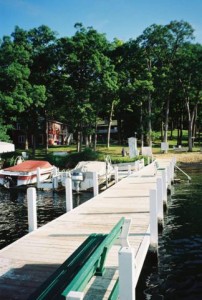
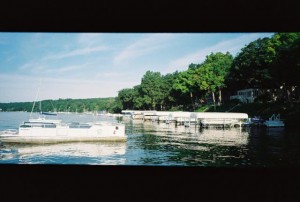
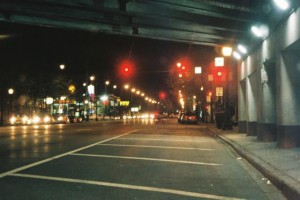
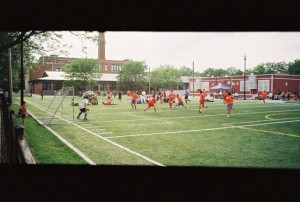
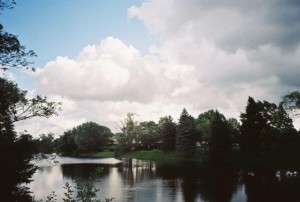

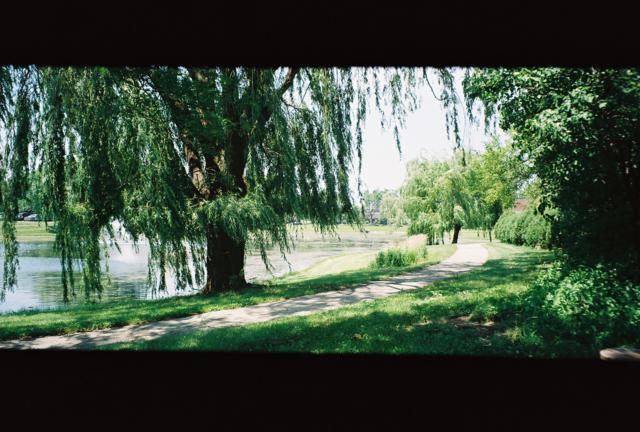
It was fun reading your write-up of the Rollei Prego 90. I got my original Prego 90 when the camera first came out on the recommendation of the camera store owner where I bought my pro gear and the articles on it in the camera magazines. I found it to be a great travel companion with a sharp lens (once I got the hang of the over/underexposure thing). The one problem I encountered with it was that at 28mm the left and right edges of the pictures I took with it were blurry! Rollei replaced the camera three times under warranty for the same problem – with my photos as proof! But the one I ended up with and still have has the same problem. I just shoot around it. Some of my best B&W images were shot with it loaded with Ilford XP2. A few of years ago I used it and my Ricoh GR1s to get quick candid shots of a friend’s wedding (along with my old Canon A-1 and manual focus lenses) and got some really great shots. Even though I shoot digital for clients (I’m freelancing after the place I worked for over 20 years closed) I still shoot film for fun. (I’m amazed at how my old Canon Ftb just fits my hands so perfectly – like it was custom made for me!) I also enjoyed seeing your photos of Chicago and environs. My oldest friend (we were kindergarten pals in a suburb of New York City) lives in Barrington and I’ve visited him several times in the past few years and I always enjoy our trips into Chicago. Thanks for a fun blog to poke around in!
Steve,
Thanks for your kind compliments on reading my blog.
It’s comments like yours that keep me blogging, and shooting with film cameras.
Best Wishes,
Richard
Pingback: Using the Rollei Prego 90 for the first and last time – Hops Trains and Backpacks